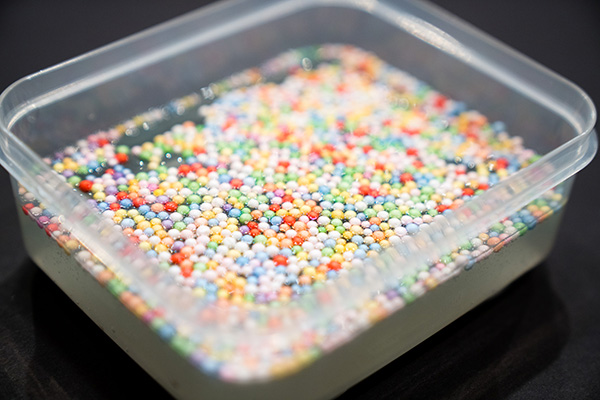 I have a difficult confession to make: My teenage daughter, Sylvia, is a slime addict. It started innocently enough but has quickly spiraled out of control. Tupperware containers full of slime litter her room. Teenagers seem particularly susceptible to the influence of slime. Parents, be warned!
I have a difficult confession to make: My teenage daughter, Sylvia, is a slime addict. It started innocently enough but has quickly spiraled out of control. Tupperware containers full of slime litter her room. Teenagers seem particularly susceptible to the influence of slime. Parents, be warned!
Sylvia first learned about slime on the internet, of course. When she first saw slime, she though it was “cool” and wanted to make it. That’s how it starts. It seems that there is a large number of slime devotees on Instagram and YouTube. We live in an amazing time, truly.
A quick trip to YouTube, and Sylvia had an ingredients list. You’d be amazed at how many “how to make slime” videos there are. It has never been easier to discover how to cook up a batch of slime. The first type of slime she made was a simple and straightforward recipe. As I would soon find out, “Basic Slime” is just the beginning.
When I sat down and talked with my daughter about her slime habit, I was most impressed by the sheer array of slime types. Basic slime, clear slime, fluffy slime, bubble gum slime, marshmallow slime, soft serve slime, lumpy slime, glossy slime, rainbow slime, crunchy slime, butter slime, jiggly slime, bouncy slime and even edible slime (gross). Hearing all these, I was reminded of the scene in Forrest Gump when Bubba is going on and on about shrimp.
The experimentation has been endless. Sylvia’s favorite type of slime currently is fluffy slime. Fluffy slime feels like a squishy stress ball. She even funneled some into a balloon, which proved quite difficult. She’s also been testing additives. Rainbow pellets and styrofoam beads have both made their way into her slime with interesting results.
The basic ingredients for slime are simple enough. The general recipe is PVA glue (like Elmer’s), shaving cream, and a “slime activator.” The activator can be borax and water, contact lens solution and baking soda, or a detergent. I wasn’t that great at chemistry, so I’m just assuming there’s some sort of slime magic at play here.
Not all experiments are successful; the worst failure was when too much slime activator was added. The slime turned into a hard, taffy-like blob, and the entire batch was scrapped. When making slime, it is best to proceed slowly. Slime can quickly turn for the worse on the uninitiated slime-maker.
If you want to start dabbling in slime creation, here’s a basic recipe. Kids, get permission and help from an adult for this!
- 1/2 cup of Elmer’s Glue-All
- (non-washable type)
- 1/2 cup of foaming shaving cream
- 1/2 cup of foaming hand soap
- Slime activator: 1 cup of warm water with 1 teaspoon of borax
Mix the glue, shaving cream, and soap together in a large plastic bowl.
Add the slime activator one teaspoon at a time while continuing to mix the slime. You’ll know it’s ready when it doesn’t stick to you or the sides of the bowl any longer. Once you’ve reached this point, the slime is ready for, well, whatever it is you do with slime.
Be sure to store your slime in an airtight container, or it will dry out.
Important Note: Please slime responsibly. Make Nona cannot be held responsible for any slime addiction that occurs as a result of this article.





Please be careful with making slime. Prolonged exposure to borax can result chemical burns:
http://www.wcvb.com/article/young-girl-badly-burned-making-popular-kids-project/9183709
Great point!